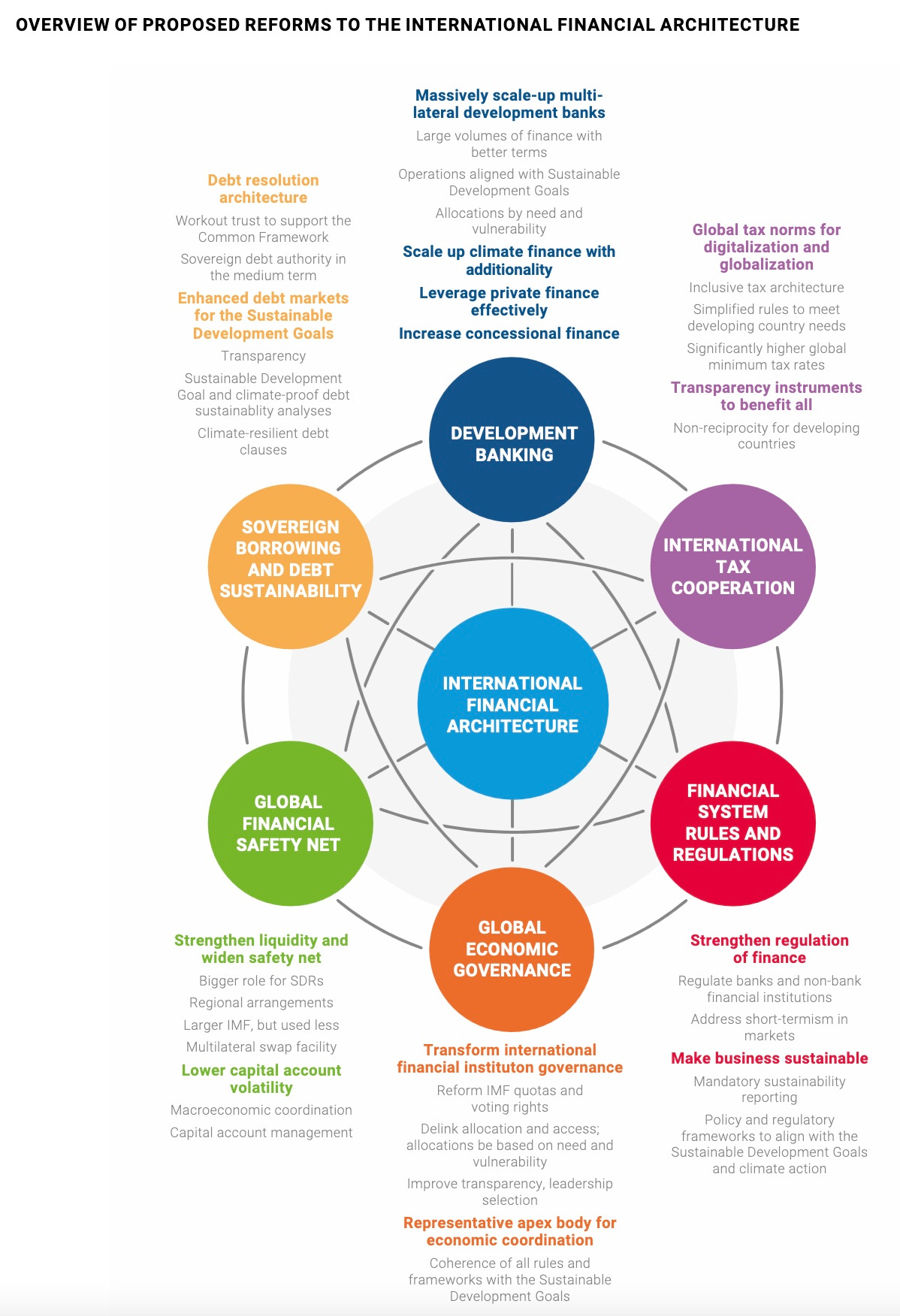The UN Secretary General issued a report on restructuring the financial architecture of the world in May 2023. Clearly they did not want people to understand it. In this case, the UN suggests that even though countries cannot pay back their loans, they should be given larger loans with longer terms to pay them back.
One way to make the ideas unintelligible is to create extraordinarily long sentences, so by the time you get to the end yo have forgotten the beginning and the meaning is lost. Here is one example that spit out 81 words before a period appeared:
“As noted in Our Common Agenda, a coordinating
body through the Biennial Summit, building on
the spirit of earlier proposals for an “Economic
Security Council”, would be a natural venue to
address immediate issues, including the promo-
tion of ultra-long-term financing for sustainable
development and a Sustainable Development
Goal stimulus for all countries in need, and longer-
term issues, such as making the international
financial architecture fit for purpose and resil-
ient to global crises, including food, energy and
financial crises.“
And they call this a solution?
“Lower the cost of sovereign
borrowing and create a lasting
solution for countries facing
debt distress”
Here are the Conclusions on page 31
OUR COMMON AGENDA POLICY BRIEF 6: REFORMS TO THE INTERNATIONAL FINANCIAL ARCHITECTURE31
Conclusion
The reforms outlined in the present policy brief
are motived by the failure of the current inter-
national architecture to fulfil its core tasks and
to support long-term stable financing for the
Sustainable Development Goals, including invest-
ments in the rights to education, health and
social protection. The Sustainable Development
Goal and Paris Agreement targets will clearly not
be met if the international financial architecture
does not channel resources at scale and speed
to the world’s most vulnerable economies. This
failure poses a growing and systemic threat to the
multilateral system itself, driving deepening diver-
gence, geoeconomic fragmentation and geopolit-
ical fractures across the world.
[In other words, lend lots more money or the financial system will collapse—though wasn’t the financial system’s problem too much unsustainable debt that got us here to the brink of financial collapse? I suspect the PTB want a lot more borrowing to stabilize things for a little while, making things more unstable over the medium term—allowing them to crash the whole thing when they have reached the right time for themselves to justify the rest of the Great Reset.—Nass]
To avert such outcomes, we must pursue ambi-
tious reforms and advance on all the proposals
in the present brief. They should be regarded as
a paradigmatic shift in the structuring of interna-
tional economic and financial relationships that,
as a package, support the convergence of coun-
tries towards sustainable development. We need
to enable more sustainable and inclusive develop-
ment pathways for all countries, aligned with the
Sustainable Development Goals and anchored
in “beyond GDP” metrics. This will require new
forms of international cooperation, underpinned
by an architecture fit for purpose in the twen-
ty-first century, across the financial and monetary
system, tax, trade, environmental stability and cli-
mate action, and other development issues. Our
current multilateral system does not fit this bill,
but it can, with the reforms that I propose in the
present policy brief.
[WTH does “beyond GDP” mean? Beyond arithmetic? Are you reading this as gobbledygook the way I am?]



















No comments:
Post a Comment